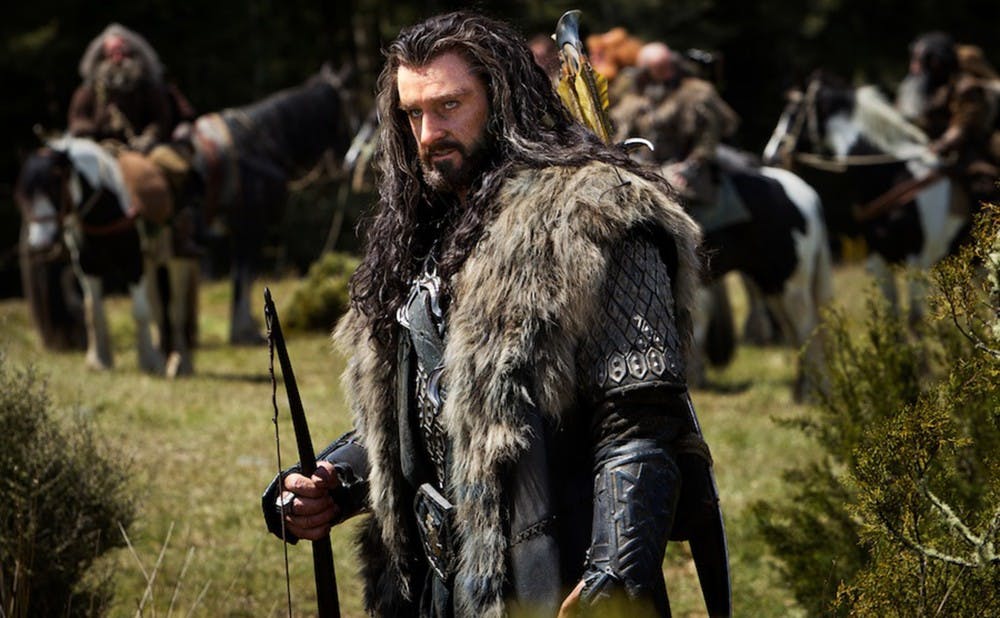Dir. Peter Jackson
Warner Bros.
5/5
As various industry award ceremonies approach, Hollywood begins to loose what many see as the most significant films of the year. These films are carefully scrutinized, and even the average moviegoer is willing to delve into the finer points of a film: What is the director showing us, is it their intention and does it work? The beauty of “The Desolation of Smaug,” however, is the film makes no attempt to be more than what can be expected: “Smaug” isn’t an exercise in symbolism, social metaphors or diagramming human nature, instead remaining true to its roots of fantasy and imagination.
By exercising this restraint, the film may well be the most entertaining movie-going experience available during the holiday season.
While director Peter Jackson does well to limit the film in areas, this isn’t to say there is anything lacking. Rather, the fantasy works the way that JRR Tolkein originally intended: the audience will naturally engage with issues of humanity through the tale—bravery, love and greed all have their place—though the cathartic effect is thoroughly dependent on immersing the audience fully in the characters and struggles of Middle Earth. This artistic imperative is what makes Jackson’s role so important.
That being said, it is first vital to recognize the differences between “The Hobbit” and “The Lord of the Rings” (LOTR) as novels. Simply put, Tolkein matured as a writer. “The Hobbit” was published almost two decades before any LOTR novels, and while it is impossible to neatly distill into one sentence all differences between the two, the most important disparity is that “The Hobbit” is relatively one-sided: the story only follows Bilbo’s adventure, there are no female characters and aside from the protagonist, there is little character development. Understandably, this impacts the film, and in the absence of genius source material, the creative impetus is thrown on the director. This strain is clearly seen in Jackson’s first installment of “The Hobbit,” which struggles to gain any dramatic traction. As a result, people were quick to assign blame for how Jackson was handling the project, and even the innovative film techniques—shooting at 48 frames per second and the animation styles—were widely criticized.
A movie later and year wiser, there are some notable changes with Jackson’s adaptation. The most obvious difference is Jackson stops being quite as faithful to the book: he brings back Legolas (Orlando Bloom) for a bigger role and creates his first original character (the she-elf, Tauriel (Evangeline Lilly), who is fantastic). The shots are much tighter and better balanced, permitting for cleaner interaction between the animated and the real. In the action sequences, the camera angles and speed of sweeps are more extreme, again making it even more difficult to distinguish between the human and computer-generated.
Jackson moves towards the visceral, showing the audience what they want to see and how they want to see it without much concern for physical logic. One moment, we’re here, and the next, we’re there, and all the while, the Orc body count gets higher than Jordan Belford. While some critics have found this problematic, the technique is exactly what makes Spielberg’s “Jurassic Park" so entertaining; the ultimate effect being a more fluid film with a consistent pace instead of bloated scenes between fast-paced action sequences.
In the end, Jackson rises to the challenge of “Smaug” by giving himself greater creative freedom. As a result, he not only translates this chapter of Tolkein’s story to the silver screen but improves it. By solving the visual problems apparent in the first installment and increasing the complexity of the action, the film becomes much more gripping and allows the audience to truly lose itself in the fantasy. By the time Bilbo (Martin Freeman) steps into the Erebor and faces Smaug (voiced by Benedict Cumberbatch), you find yourself so wrapped up in the story that everything begins to pop; the sound of a coin dropping has you holding your breath, the confrontation with Smaug leaves you wide-eyed and after three hours, when the credits roll, the only certain thing is that you want to go back to Middle Earth.
Get The Chronicle straight to your inbox
Signup for our weekly newsletter. Cancel at any time.

